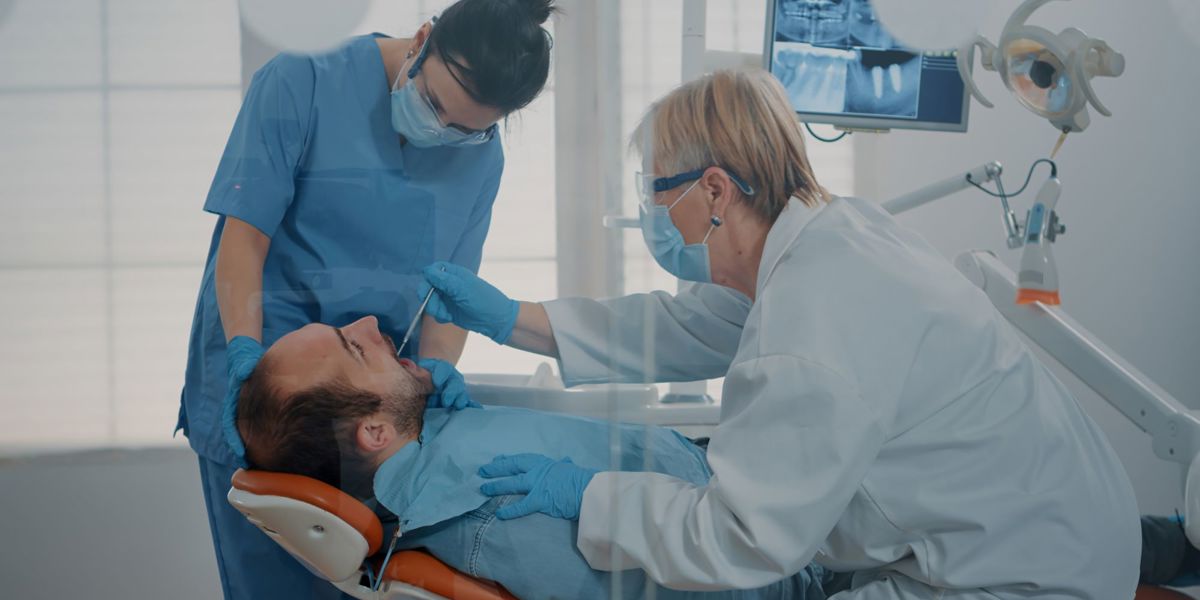QI case study: Transforming dental care
- QI Case Studies
- QI Improving Patient Experience and Outcomes
- QI Digital Automation and IT Systems
- QI Improving Processes
- QI New Ways of Working - Innovations

What is a QI Case Study?
Case Studies invite you to explore invaluable insights through a collection of compelling improvement projects from across the Trust. Read below for a Deep Dive into how the Special Care Dentistry (SCD) service developed a referral, triage and booking system to improve services.
Improvement Name: Transforming Dental Care: A comprehensive service review
Date: March 2024
Deep Dive: Understanding the Problem
 The challenge:
The challenge:
The Special Care Dentistry (SCD) service had an increasing backlog of patients waiting for an appointment. Limited visibility of demand, capacity and appointment utilisation resulted in reactive planning rather than proactive forecasting and performance analysis. There was variability in capacity and administration processes between locations. This is unfair to patients who can receive a different experience accessing and waiting for their SCD treatment depending on location.
Investigation of current pathways:
Current levels of demand are putting pressure on a finite number of appointments, leading to long waiting times, Booking processes and timelines are leading to high cancellation rates and therefore low utilisation of available capacity. A lack of reporting is preventing visibility and awareness and restricting the ability to analyse and identify improvement opportunities.
Unveiled data insights:
Analysis on current service demand and capacity revealed information on referral patterns, activity trends across the week, and available capacity. Referral source data showed 20% of GDPs accounting for 75% of referrals. Significant variation also existed in utilisation rates.
Engagement:
Discussion and listening sessions were held with colleagues at each location.
Patient experience:
There was no existing patient forum in place, with anecdotal feedback that access is frustrating, with long wait times for appointments and a high frequency of cancelations which further delay access to treatment. Onc at an appointment, the experience is frequently rated as positive, with supporting, friendly and caring staff.
Design: Designing the Change
 A combination of workshops and other meetings helped to identify and subsequently design 10 streams of work within the plan. Examples included:
A combination of workshops and other meetings helped to identify and subsequently design 10 streams of work within the plan. Examples included:
Reporting - New reports for key metrics
Triage - Alignment to improve consistency
System design - Defining hierarchies and appointment coding to improve analysis and visibility of trends.
Capacity - measurement of clinical activities, rotas and resources plans.
Non-clinical time - defined classifications to improve appointment availability
Appointment booking - simplified and standardised processes
Patient communications - establishing a forum and updating existing templates and forms
Discharge - Defined criteria and processes to help reduce on-going appointment demands.
Clinical systems - training to support consistent ways of working across clinical and admin teams.
Deliver:
 A wide range of initiatives were delivered across 2023/4, supported by a new Transformation Oversight Group (TOG) to provide governance over the plans. Highlights include:
A wide range of initiatives were delivered across 2023/4, supported by a new Transformation Oversight Group (TOG) to provide governance over the plans. Highlights include:
Reporting - New operational dashboard with 20 reports (demand, activity and utilisation) and new PowerBi reporting (patient tracking lists, waiting lists and breaches).
Triage- Standardised guidelines and new peer review forum.
System - Revised appointment codes, new location and cancellation codes, API access etc.
Capacity - Modelled capacity at clinician and location level, actual versus potential reporting, job plan alignment.
Non-clinical - Clarity on activity type, frequency and duration, increased visibility through reporting.
Booking process - Improvements to portal functionality, new recall system, new automated confirmation messaging, revised admin processes and defined accountabilities.
Patients - Established ne 'Working Together' group, QR codes on forms, re-designed patient passports.
Training - 2 multi-team sessions to align ways of working and ensure best practices across clinical and admin teams.
Discharge - New protocols to ensure the right acceptance into service, updated forms and letters, new case mix custom screens.
Evolve: Continuous Improvement
Post-implementation and feedback sessions were held to capture learning and areas for ongoing improvement.
Lessons Learnt:
- Building team capability can be as important as system design (training, knowledge, curiosity).
- Collaboration is essential for pathway development, involving relationship-building and role understanding. Ensuring the end user/operational owner is involved in the design is important.
- A lack of system data and reporting can restrict the visibility and identification of impact measures.
- Appropriate governance structures, with external stakeholder involvement, is necessary to support changes within a service.
50% of appointment confirmation calls now automated by SMS, saving - 3 mins per call, equating to 55 hrs of phone activity in 1 month.
30 New reports on key operational metrics available via 2 new dashboards.
5 Patients representing service users formed a new 'Working Together' group to improve co-production on future initiatives.
![]() You can find more information about Special Care Dentistry (SCD) team and their case study below.
You can find more information about Special Care Dentistry (SCD) team and their case study below.
Download the full Case Study here
If you'd like to dive into more examples of projects, head to our Case Studies page for inspiration.
Last reviewed:
1 March, 2025

